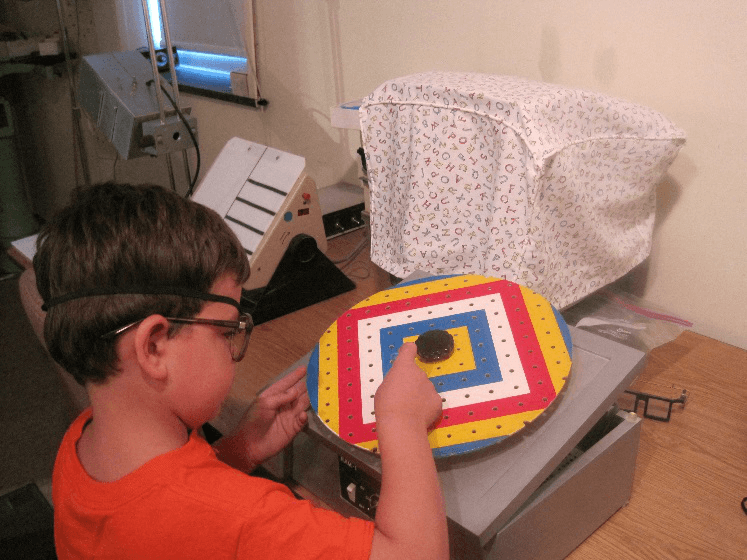What is Autism?
Autism is a developmental neurological condition, consisting of a range of conditions classified as neurodevelopmental disorders—hence its name ‘autistic spectrum disorder’ (ASD). Autism affects how children communicate and interact with others and how they make sense of the world surrounding them.
Beginning in infancy, children with autism have difficulties with communication, social interaction, and exhibit restricted/repetitive interests and behaviours. These difficulties are often accompanied by behavioural challenges and sensory issues.
Autism affects the way the brain interprets information and social cues in terms of touch, movement, smell, taste, hearing or vision. Since autism is a spectrum of disorders, not all kids with autism will react the same way. For example, some can be overresponsive to sensation and may try to minimise perceived sensory overload by avoiding being touched. They may cover their ears with certain sounds. They may not show any desire to connect with others. Others are underresponsive and seek out constant stimulation by playing loud music or moving constantly.
Visual Problems and Autism
 Children with ASD have motor, sensory, language and social-emotional delays that affect visual processing. Likewise, visual problems affect cognitive, speech-language, social-emotional and perceptual development.
Children with ASD have motor, sensory, language and social-emotional delays that affect visual processing. Likewise, visual problems affect cognitive, speech-language, social-emotional and perceptual development.
Vision problems are a common in individuals with autism. Some visual signs or behaviour in children with autism include:
- poor or lacking eye contact
- staring at spinning objects or light
- fleeting peripheral glances
- sensitivity to light
- difficulty maintaining visual attention
- eye movement problems
- widening eyes or squinting when asked to look
- bumping into objects
- pushing or rubbing eyes
Recent studies have found that strabismus, amblyopia and refractive errors, such as short-sightedness, long-sightedness and/or astigmatism, may be more common in those with ASD. These visual problems can be treated, managed and corrected, especially if examined early in life.
Poor Integration of Central and Peripheral Vision
 Individuals with autism may also have problems coordinating their central and peripheral vision. For example, when asked to follow an object with their eyes, they may not look directly at the object. Instead, they will scan or look off to the side of the object.
Individuals with autism may also have problems coordinating their central and peripheral vision. For example, when asked to follow an object with their eyes, they may not look directly at the object. Instead, they will scan or look off to the side of the object.
Bob Doman, founder of the National Association for Child Development, says that in terms of vision, majority of children with autism are hyperperipheral and hypomacular. What does this mean?
Look at the red bus in the picture. You are using your central macular vision—the fine, sharp, straight-ahead vision. Everything else in the picture, like the blue plane on the left, appear blurred. They belong to your peripheral vision.

Babies begin life by using their peripheral vision, and as they develop, their central macular vision kicks in. In children with autism, the central vision can be extremely slow to kick in, hence they use their peripheral vision. Therefore, when a child with autism appears to look elsewhere instead of looking directly at you, it’s because their central vision hasn’t developed properly yet and they are using their peripheral vision. That’s also why it is hard to teach a child with autism in a room with distracting or moving objects in the environment.
Poor integration of central and peripheral vision can lead to difficulties in processing and integrating visual information. Motor, cognitive, speech, and perceptual abilities can also be affected when visual processing is interrupted.
Eye Examination for Patient/s with Autism
Patient/s with autism have diverse needs, challenges and symptoms. Vision care is an essential part of understanding those needs.
Testing vision in patients with autism will vary depending on the individual levels of emotional and physical development. Optometrists not only determine the refraction and eye health but also observe the individual’s postural adaptations and visual behaviours—for example, how they sit, walk, stand, catch and throw a ball.
Children with ASD require continuing care, and with early exams and diagnosis, there is increased likelihood of improvement and overall chances for success. It is suggested that all children undergo visual exams by six months of age.
Treatment of Visual Problems associated with Autism
Depending on the results of the testing, optical lenses or prisms may be used to correct for their vision problems. Vision therapy may be offered to teach the visual system how to work and help eye movement control. The goal of treatment is to help the patient with autism organise visual space and gain peripheral stability so they can better be attended to and appreciate central vision. This will help them gain more efficient eye coordination and improve visual information processing.
 Vision therapy helps a person develop proper visual skills as well as to reconnect the proper communication channels between vision, touch, movement, and balance. It allows the person to engage in, observe, learn about and become aware of their surroundings.
Vision therapy helps a person develop proper visual skills as well as to reconnect the proper communication channels between vision, touch, movement, and balance. It allows the person to engage in, observe, learn about and become aware of their surroundings.
Each patient’s therapy is specifically designed to improve their visual functioning, and treatment is adjusted based on improvement and needs. Such areas of visual functioning including visual development, peripheral visual awareness, eye movements, focusing, eye teaming, eye-hand coordination and visual acuity.
